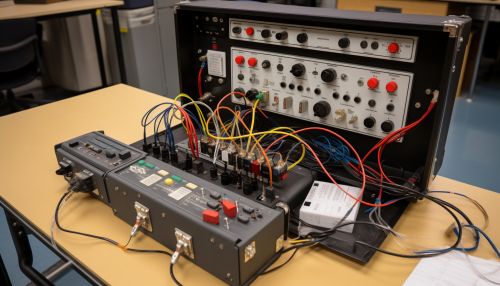Luria-Nebraska Neuropsychological Battery
Overview
The Luria-Nebraska Neuropsychological Battery (LNNB) is a standardized test used in the field of clinical neuropsychology to assess neuropsychological functioning. It is designed to detect brain damage and to understand its nature, extent, and location. The LNNB is based on the theoretical and clinical work of the Russian neuropsychologist A. R. Luria, and was developed in the United States at the University of Nebraska.


History
The LNNB was first published in 1980, following a decade of research and development by Charles J. Golden, Gerald D. Hammeke, and J. Arturo Silva at the University of Nebraska. The test was inspired by the work of Alexander Luria, who emphasized the importance of understanding the qualitative aspects of brain-behavior relationships, rather than relying solely on quantitative measures. The LNNB was designed to be a comprehensive, ecologically valid, and individualized assessment tool that could be used to evaluate a wide range of cognitive, sensory, and motor functions.
Structure
The LNNB consists of 269 items divided into 11 clinical scales, which are further divided into 28 subscales. The 11 clinical scales include: Motor Functions, Rhythm, Tactile Functions, Visual Functions, Receptive Speech, Expressive Speech, Writing, Reading, Arithmetic, Memory, and Intellectual Processes. Each scale is designed to assess a different aspect of neuropsychological functioning, and the subscales provide more specific information about particular abilities or deficits.
Administration and Scoring
The LNNB is administered individually and can take between 2 to 3 hours to complete. The test items are presented in a fixed order, and the examiner records the individual's responses on a standardized scoring form. Each item is scored on a 3-point scale, with higher scores indicating greater impairment. The raw scores are then converted into standard scores based on normative data. The results can be interpreted in terms of the individual's overall neuropsychological status, as well as their specific strengths and weaknesses.
Validity and Reliability
The LNNB has been subjected to extensive validity and reliability testing. Research has shown that the LNNB has good construct validity, as it measures the constructs it purports to measure. It also has good criterion validity, as it accurately identifies individuals with brain damage. The test-retest reliability of the LNNB is also high, indicating that it produces consistent results over time. However, some critics have raised concerns about the LNNB's sensitivity and specificity, arguing that it may overdiagnose brain damage in some cases.
Clinical Applications
The LNNB is used in a variety of clinical settings, including hospitals, rehabilitation centers, and private practices. It is used to assess individuals with a wide range of neurological conditions, such as traumatic brain injury, stroke, dementia, and developmental disorders. The LNNB can also be used to monitor the progress of individuals undergoing rehabilitation or treatment for brain injury. In addition to its clinical applications, the LNNB is also used in research to investigate the neuropsychological correlates of various neurological and psychiatric conditions.
Criticisms and Controversies
Despite its widespread use, the LNNB has been the subject of some criticism and controversy. Some critics argue that the LNNB is too long and complex to administer, and that it may not provide any additional information beyond what can be obtained from shorter and simpler tests. Others have questioned the validity of the LNNB's theoretical basis, arguing that it is not grounded in contemporary neuropsychological theory. However, proponents of the LNNB argue that its comprehensive nature and emphasis on qualitative analysis make it a valuable tool for neuropsychological assessment.
